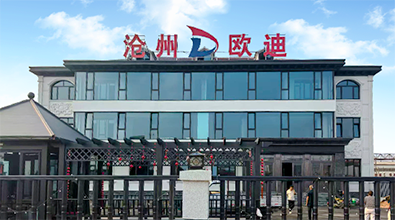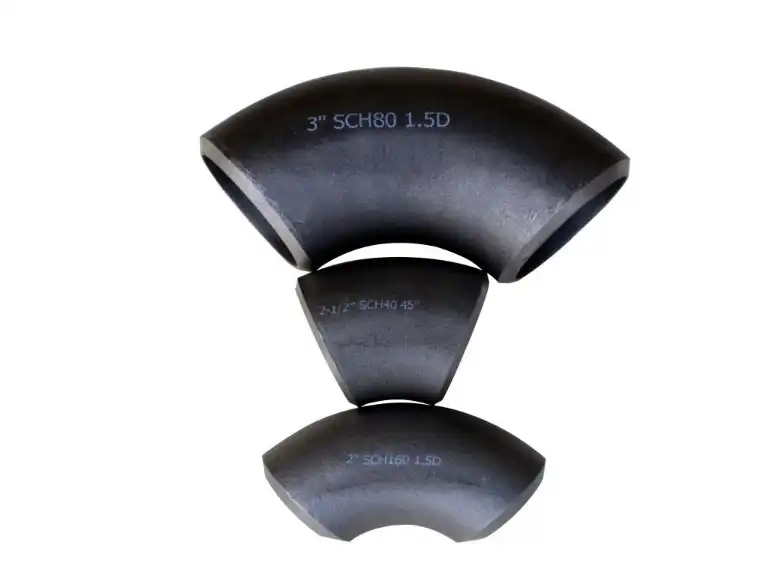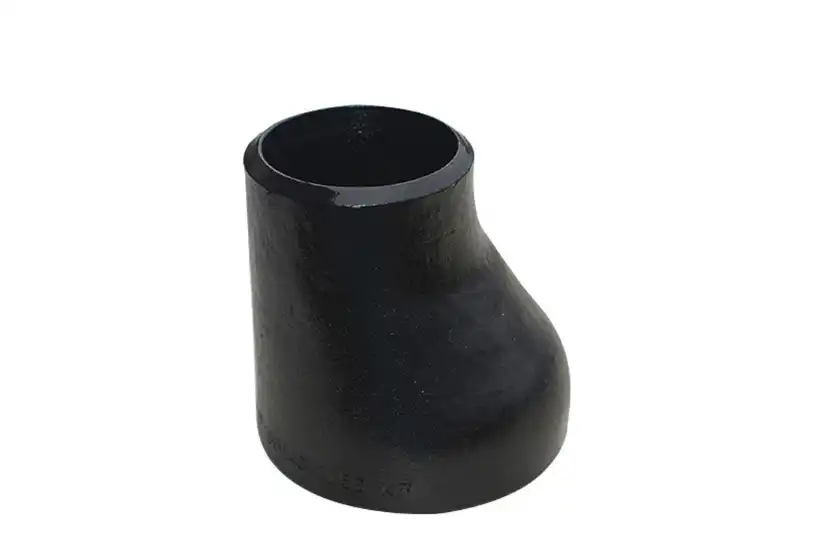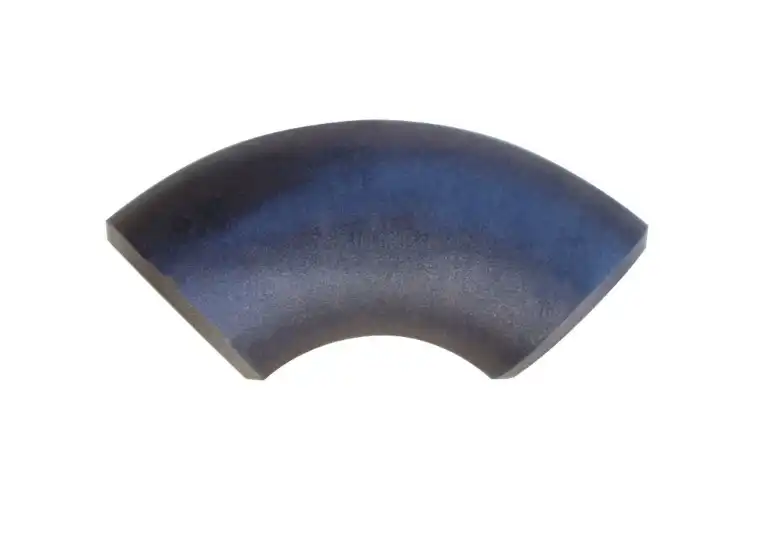Comprehensive Guide to Carbon Steel Elbows: Types and Buying Insights
Carbon steel elbows are crucial components in piping systems, facilitating directional changes in fluid flow. This comprehensive guide delves into the various types of carbon steel elbows, their applications, and essential buying considerations. Whether you're a seasoned engineer or a procurement specialist, understanding the nuances of these fittings is vital for ensuring optimal performance and longevity in your piping projects. From long radius to short radius elbows, and from 45-degree to 90-degree configurations, we'll explore the diverse range of options available in the market. Additionally, we'll discuss the importance of material grade, wall thickness, and surface treatments in selecting the right carbon steel elbow for your specific needs. By the end of this guide, you'll be equipped with the knowledge to make informed decisions when sourcing these critical piping components.

Types of Carbon Steel Elbows
Long Radius (L/R) Elbows
Long radius carbon steel elbows are widely used in piping systems due to their smoother flow characteristics and lower pressure drop. These elbows have a center-to-end dimension of 1.5 times the nominal pipe size (NPS), allowing for a gentler curve and reduced turbulence. Carbon steel L/R elbows are available in various angles, with 90-degree and 45-degree being the most common. The extended radius of these fittings makes them ideal for applications where space is not a constraint and maintaining flow efficiency is crucial. Long radius carbon steel elbows are often preferred in high-pressure systems, as they minimize wear and erosion caused by fluid flow, thereby extending the lifespan of the piping system.
Short Radius (S/R) Elbows
Short radius carbon steel elbows are designed with a tighter bend radius, typically equal to the nominal pipe size. These fittings are ideal for installations where space is limited, and a more compact design is required. While S/R elbows may introduce slightly higher pressure drops compared to their long radius counterparts, they offer advantages in terms of space savings and reduced material costs. Carbon steel short radius elbows are commonly used in less critical applications or where flow rates are lower. When selecting S/R elbows, it's essential to consider the potential impact on flow characteristics and ensure that the chosen fitting meets the specific requirements of your piping system.
Specialty Elbows
In addition to standard long and short radius options, carbon steel elbows are available in specialty configurations to meet unique project requirements. These may include sweep elbows with an even larger radius for ultra-smooth flow, reducing elbows that combine a change in direction with a reduction in pipe size, and custom-angle elbows for precise directional changes. Some carbon steel elbows feature reinforced designs for high-stress applications or come with special coatings for enhanced corrosion resistance. When considering specialty carbon steel elbows, it's crucial to work closely with manufacturers or suppliers to ensure the chosen fitting aligns with your specific project needs and complies with relevant industry standards.
Material Grades and Specifications
ASTM A234 Grade WPB
ASTM A234 Grade WPB is one of the most commonly used materials for carbon steel elbows. This grade offers excellent strength and durability, making it suitable for a wide range of applications in the oil, gas, and petrochemical industries. Carbon steel elbows made from A234 WPB have good weldability and can withstand high temperatures and pressures. When selecting elbows in this grade, it's important to consider factors such as operating temperature, pressure ratings, and chemical compatibility. A234 WPB carbon steel elbows are often preferred for their cost-effectiveness and reliable performance in moderate to severe service conditions.
Other Carbon Steel Grades
While A234 WPB is widely used, other carbon steel grades are available for elbows to meet specific project requirements. These may include grades such as A420 WPL6 for low-temperature applications, or higher-carbon grades like A234 WPC for increased strength. When selecting carbon steel elbows, it's crucial to consider the specific operating conditions and consult relevant standards such as ASME B16.9 for dimensions and tolerances. Some projects may require carbon steel elbows with enhanced properties, such as improved corrosion resistance or higher yield strength, necessitating the use of specialized grades or heat treatments.
International Standards Compliance
Carbon steel elbows are manufactured to comply with various international standards, ensuring consistency in quality and performance across different regions. Common standards include ASME B16.9 for dimensions, ASTM A234 for material specifications, and EN 10253 for European applications. When sourcing carbon steel elbows, it's essential to verify that the fittings meet the required standards for your project. This may involve reviewing material certificates, dimensional reports, and quality control documentation. Compliance with international standards not only ensures the quality of the carbon steel elbows but also facilitates easier integration into global projects and supply chains.
Buying Considerations for Carbon Steel Elbows
Wall Thickness and Pressure Ratings
When selecting carbon steel elbows, wall thickness is a critical factor that directly impacts the pressure-bearing capacity of the fitting. Common wall thicknesses for carbon steel elbows include SCH40, SCH80, and STD (standard weight). The choice of wall thickness depends on the operating pressure, temperature, and the specific requirements of your piping system. It's essential to consult pressure-temperature ratings charts and relevant codes to ensure the selected carbon steel elbow can safely handle the intended service conditions. Additionally, consider future system upgrades or changes in operating parameters when specifying wall thickness for carbon steel elbows to provide a margin of safety and flexibility.
Surface Treatments and Coatings
Carbon steel elbows are susceptible to corrosion, especially in harsh environments or when exposed to corrosive fluids. Various surface treatments and coatings can be applied to enhance the durability and longevity of these fittings. Common options include black paint, light oil coating, and hot-dip galvanization. For more demanding applications, specialized coatings such as fusion-bonded epoxy or ceramic coatings may be considered. When specifying surface treatments for carbon steel elbows, it's important to balance corrosion protection with cost-effectiveness and compatibility with the intended service. Some coatings may affect weldability or require special handling during installation, factors that should be considered in the selection process.
Quality Assurance and Certifications
Ensuring the quality and reliability of carbon steel elbows is paramount for the safety and efficiency of piping systems. When sourcing these fittings, look for manufacturers with robust quality assurance programs and relevant certifications. ISO 9001 certification is a good indicator of a manufacturer's commitment to quality management. Additionally, specific industry certifications such as API Q1 for oil and gas applications or PED (Pressure Equipment Directive) compliance for European markets may be required. Request material test reports (MTRs) and certificates of conformance to verify that the carbon steel elbows meet the specified material and dimensional requirements. Conducting factory audits or third-party inspections can provide further assurance of the quality and consistency of the carbon steel elbows you're purchasing.
Conclusion
Carbon steel elbows are indispensable components in various industrial piping systems, offering durability and versatility. This guide has explored the types, materials, and key considerations for selecting the right carbon steel elbow for your project. By understanding the nuances of long radius vs. short radius elbows, material grades, and quality assurance measures, you can make informed decisions that optimize your piping system's performance and longevity. Remember to consult with reputable manufacturers and consider factors such as pressure ratings, surface treatments, and compliance with relevant standards when sourcing carbon steel elbows for your next project.
For more information on our high-quality carbon steel elbows and other piping components, please contact us at oudi-04@oudiguandao.com. Our team of experts is ready to assist you in finding the perfect solution for your piping needs.
References
1. ASME B16.9-2018: Factory-Made Wrought Buttwelding Fittings. American Society of Mechanical Engineers, New York.
2. ASTM A234 / A234M - 19: Standard Specification for Piping Fittings of Wrought Carbon Steel and Alloy Steel for Moderate and High Temperature Service. ASTM International, West Conshohocken, PA.
3. Nayyar, M.L. (2000). Piping Handbook, 7th Edition. McGraw-Hill Education, New York.
4. Smith, P. (2005). Piping Materials Guide. Elsevier Science, Amsterdam.
5. Antaki, G.A. (2003). Piping and Pipeline Engineering: Design, Construction, Maintenance, Integrity, and Repair. CRC Press, Boca Raton.
6. API 5L: Specification for Line Pipe, 46th Edition. American Petroleum Institute, Washington, D.C.

Need help finding the right solution with our experts. Please contact us.

SINCE 1998 Your Reliable Pipeline Manufacturer



